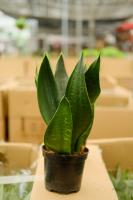Introduction
The water cycle is an essential process that enables the circulation and conservation of water on our planet. It involves several interconnected processes that help to purify, distribute, and regulate the amount of water available for different uses. One of the critical components of the water cycle is the role played by clouds and plants. In this article, we will explore how clouds and plants contribute to the water cycle and the significance of their functions.
Clouds and the Water Cycle
Clouds play a vital role in the water cycle by acting as the primary means of transporting water between the earth's surface and the atmosphere. Clouds form when warm, moist air rises and cools, causing the water vapor to condense into tiny droplets or ice crystals. This process is known as condensation, and it is the first step in the formation of clouds.
Once clouds form, they can have several effects on the water cycle. One of the most crucial roles that clouds play is in precipitation. Precipitation occurs when the water droplets or ice crystals in a cloud become heavy enough to fall to the ground. This can happen in the form of rain, snow, sleet, or hail, depending on the temperature and other conditions in the atmosphere.
Clouds also contribute to the water cycle by reflecting sunlight back into space. This helps to regulate the temperature of the earth's surface and reduce the amount of heat absorbed by the atmosphere. As a result, clouds play an essential role in maintaining the delicate balance of the earth's climate.
Plants and the Water Cycle
Plants also play a crucial role in the water cycle, primarily through a process known as transpiration. Transpiration is the process by which plants release water vapor from their leaves into the atmosphere. This water vapor then contributes to the formation of clouds, which can lead to precipitation and the return of water to the earth's surface.
In addition to transpiration, plants also help to regulate the amount of water in the soil by absorbing water through their roots. This process, known as infiltration, allows water to percolate through the soil and recharge underground aquifers. Plants also help to reduce the occurrence of erosion by holding soil in place with their roots.
Another essential role that plants play in the water cycle is in the uptake of carbon dioxide. This process, known as photosynthesis, involves the absorption of carbon dioxide from the atmosphere and the release of oxygen as a byproduct. This helps to regulate the amount of carbon dioxide in the atmosphere and contributes to the maintenance of the earth's climate.
Conclusion
In conclusion, clouds and plants play essential roles in the water cycle. Clouds help to transport water between the earth's surface and the atmosphere, regulate the earth's climate, and contribute to the formation of precipitation. Plants, on the other hand, help to regulate the amount of water in the soil, absorb carbon dioxide, and contribute to the formation of clouds through transpiration. As such, understanding these processes is critical for our ability to manage and protect the earth's natural resources.

 how many times do yo...
how many times do yo... how many planted tre...
how many planted tre... how many pine trees ...
how many pine trees ... how many pecan trees...
how many pecan trees... how many plants comp...
how many plants comp... how many plants can ...
how many plants can ... how many plants and ...
how many plants and ... how many pepper plan...
how many pepper plan...































